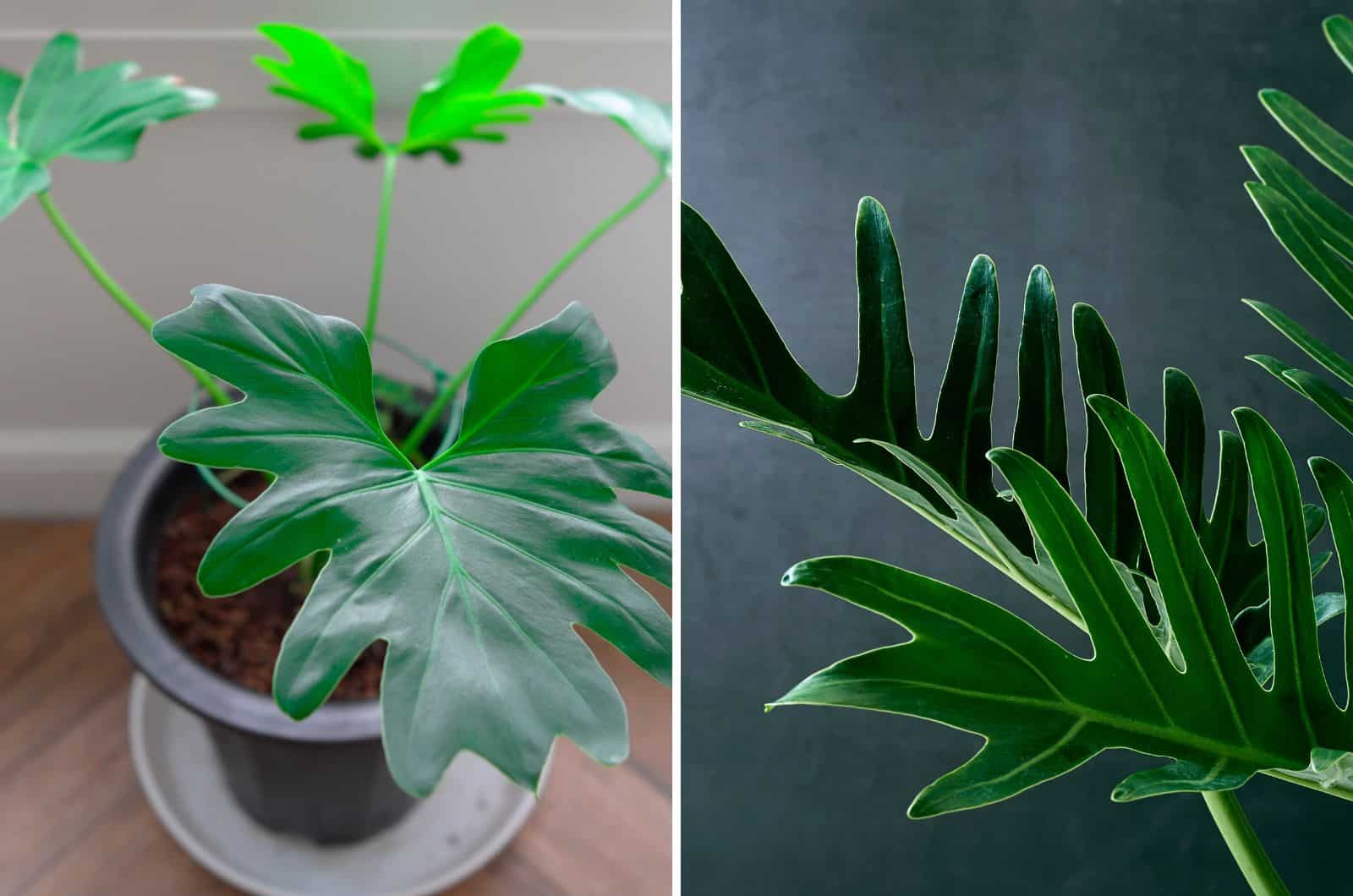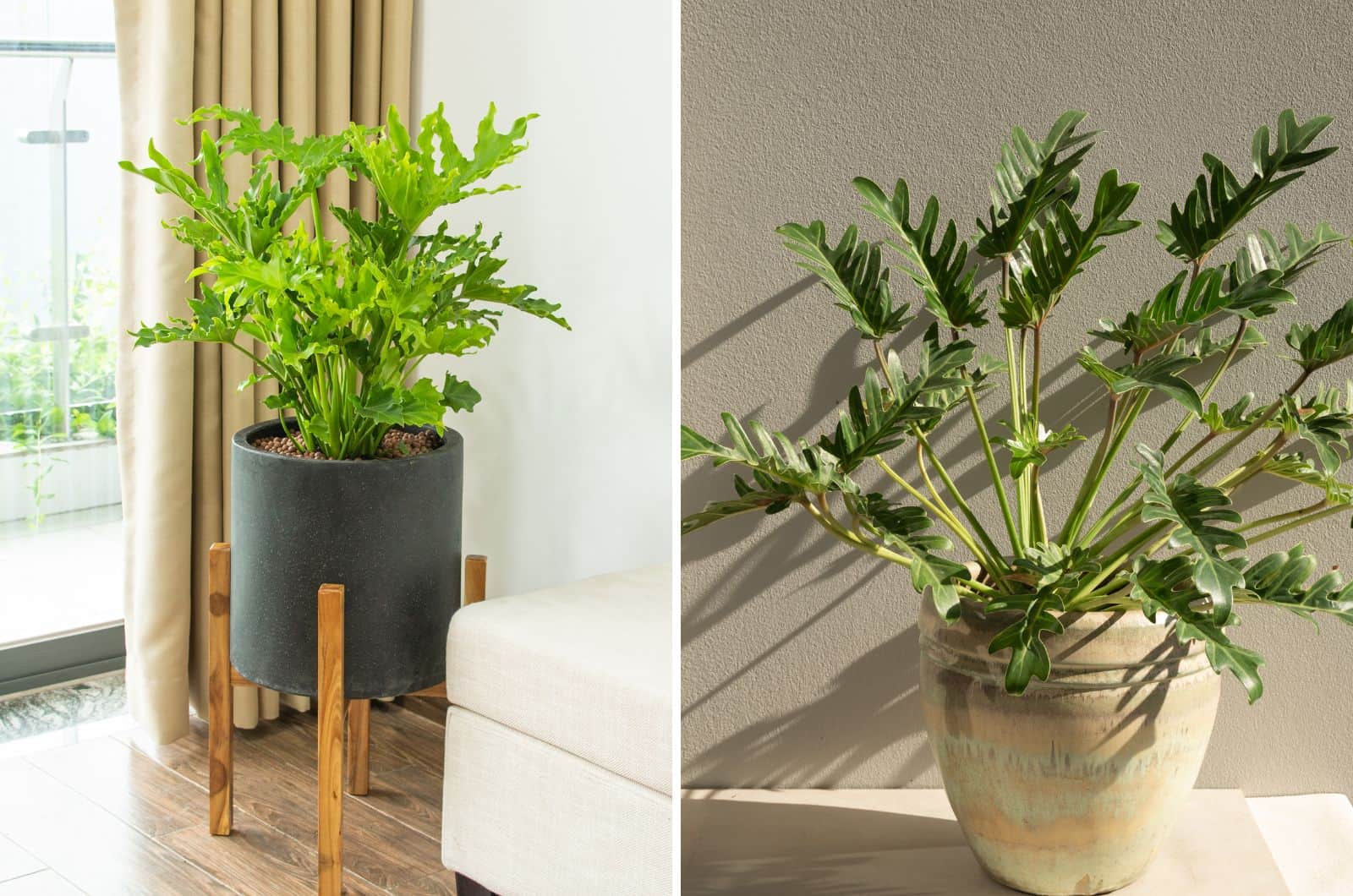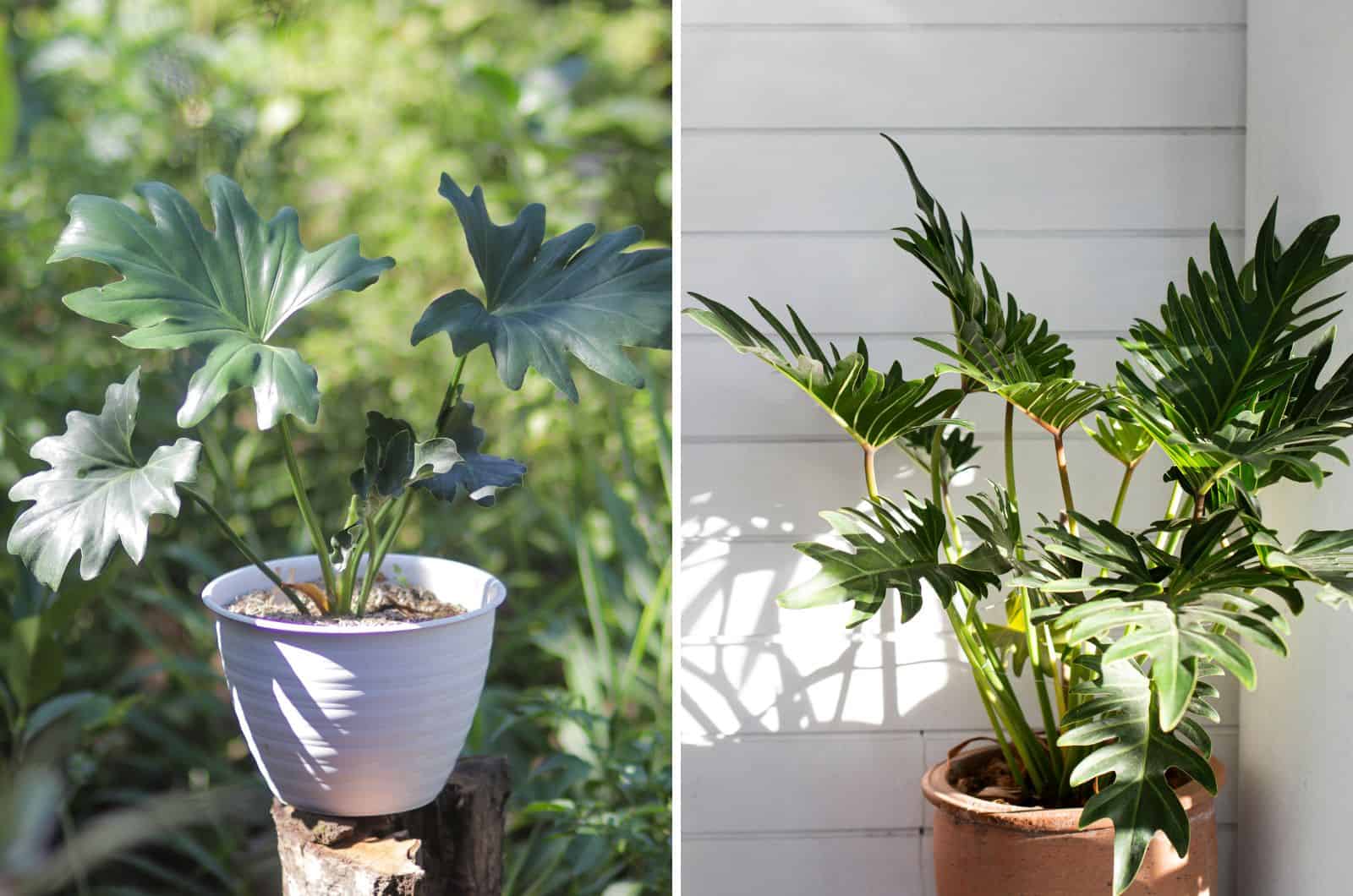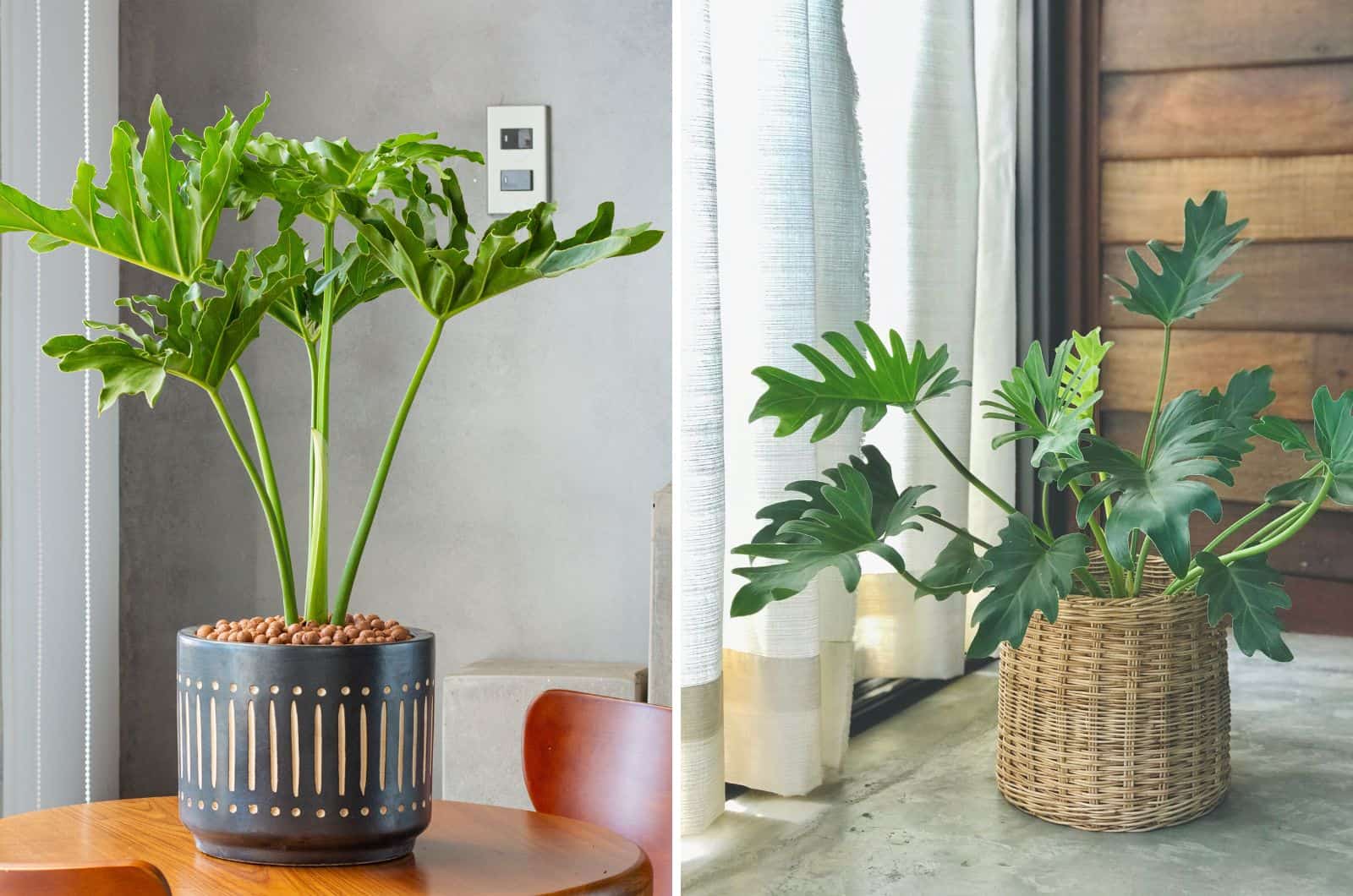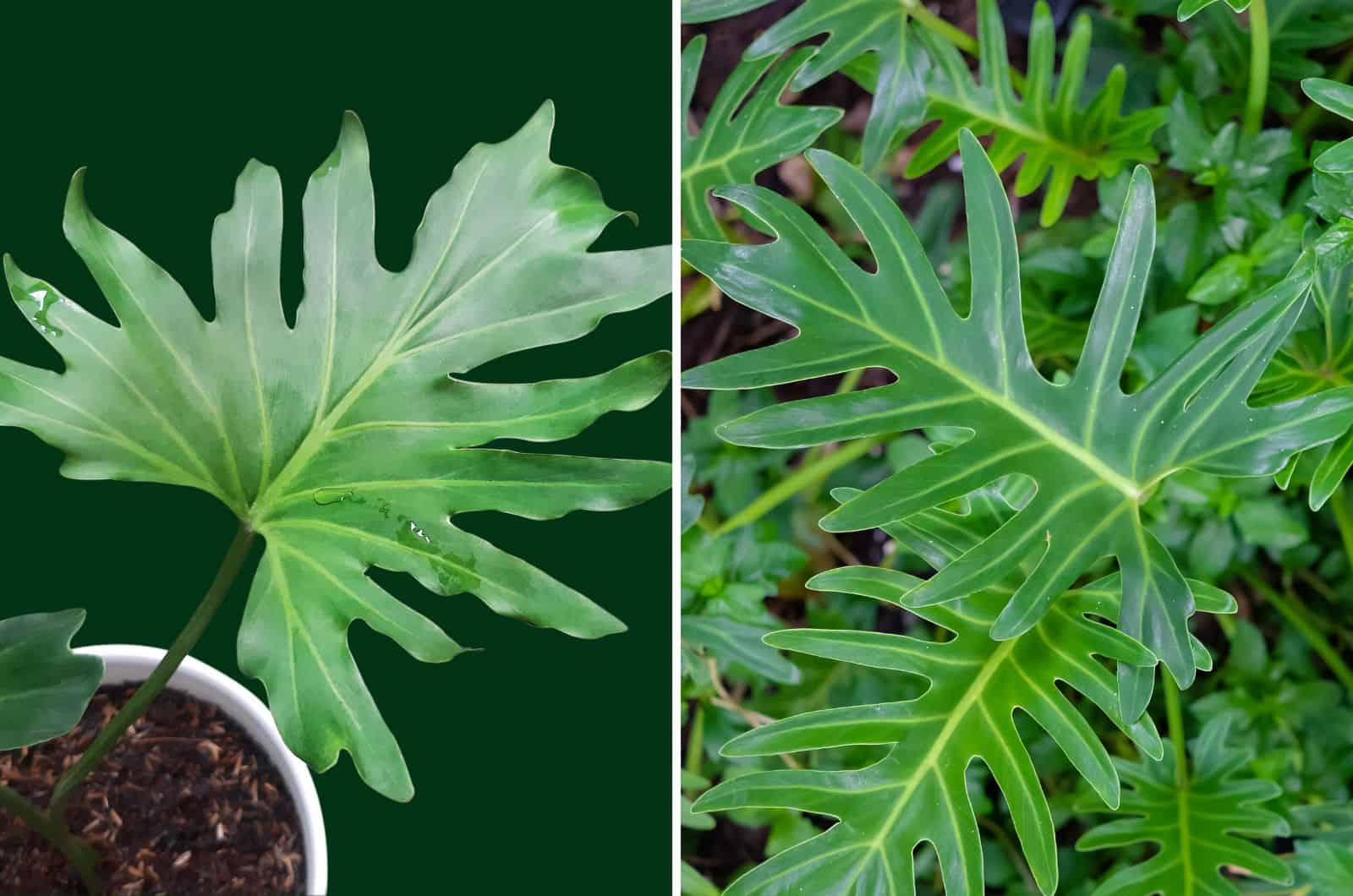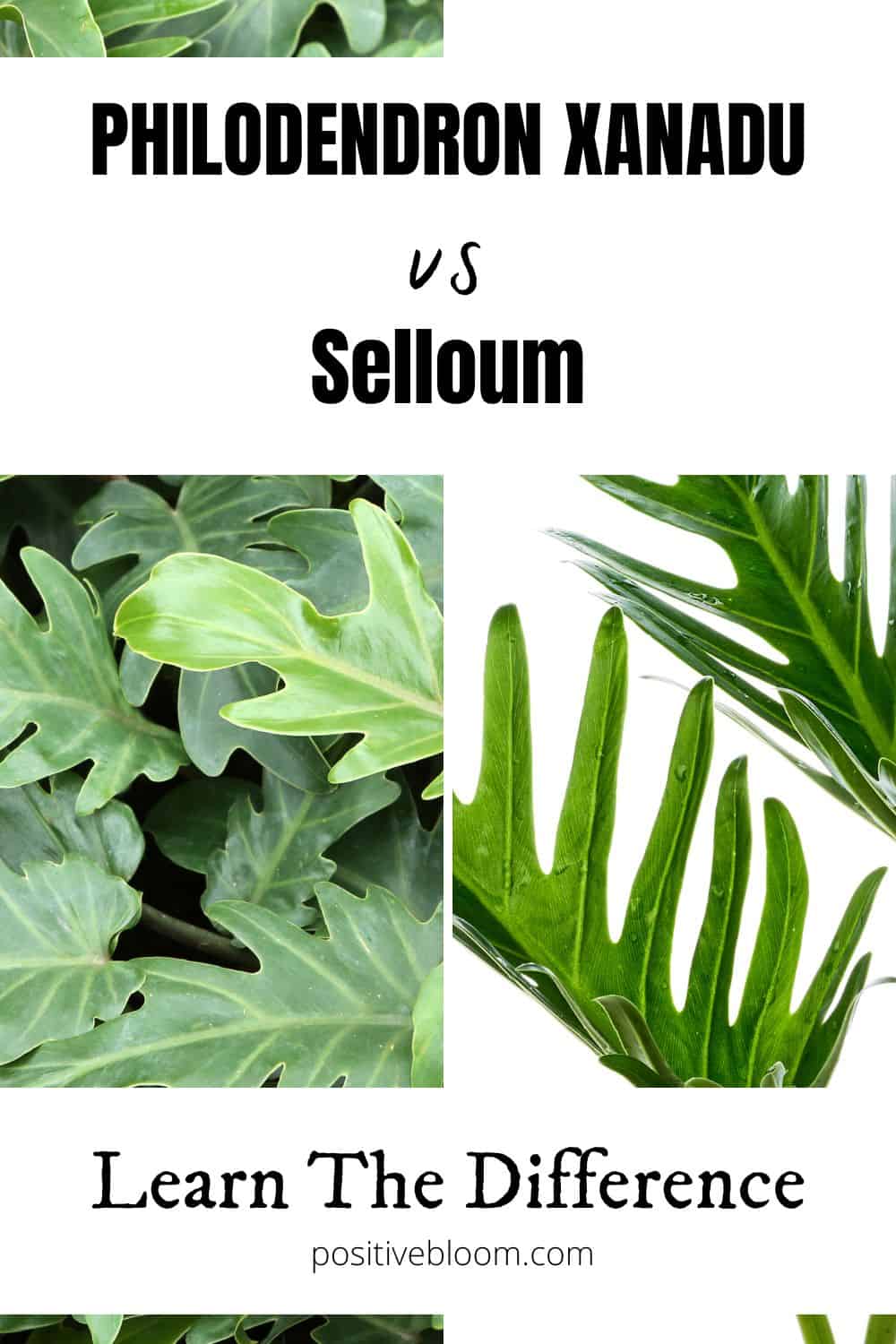If you grow two very similar houseplants and know to which species they belong, you start noticing the differences after some time.
Sometimes it may be pretty hard to differentiate between two plants, and we believe we are growing two of the same plants unless someone says differently.
This frequently happens with two Philodendron plants in particular: the Philodendron selloum and Philodendron xanadu. When looking at these plants, it may be hard to believe that there are any differences.
However, these are not the same plants, and I will show you the differences between Philodendron xanadu vs selloum so that you never mistake them.
Before we move on, here is some basic info about these species:
[table id=471 /]
Let’s get started!
Philodendron Xanadu vs Selloum: Key Differences
All Philodendron species come from the Araceae family and are native to tropical regions.
If you are looking for a Philodendron to add to your collection, you can choose between vining and climbing species.
If you have already grown a few Philodendrons and have either a mature xanadu or selloum (or both) in your collection, first look at the leaf size and height of both species.
Here are the differences.
Leaf Size
Both species feature deeply lobed leaves that many growers describe as finger-like.
That’s what the leaves of both species have in common. But the first thing to look at is the size of the leaves.
Believe it or not, the Philodendron selloum has the largest leaves of all species from the Philodendron genus.
They have long, silky stems that connect them to the trunk and can reach lengths of up to 5 feet.
For the selloum plant leaves, everything comes down to their size, but for the xanadu plant it’s all about beauty.
The mature Philodendron xanadu features symmetrical lobes typically 16 inches in length and 12 inches in width.
Another thing to consider when it comes to the leaves of these species is their arrangement.
While the selloum plant develops, new leaves grow in a spiral pattern from its trunk.
For the xanadu species there’s no specific pattern – it’s more random.
Height & Growth Habit
Suppose you grow both of these species and ensure the same light conditions, water, and food.
When both species reach maturity, one will be significantly larger. Again, the Philodendron selloum wins the size battle.
Believe it or not, this species can grow up to 12 feet in height and 15 feet in width. The selloum plant can develop into a tree in its native habitat. If you come upon the name, Tree Philodendron, it’s actually a selloum species, and now you know why.
Don’t worry, your selloum won’t turn into a tree and break your ceiling.
Xanadu won’t grow this large; its mature height is typically 5 feet and it can reach 7 feet in width. It develops in a clump.
If you want a smaller plant or if it grows too large for your house, simply prune the clump. Be sure to put on gloves and sterilize your tools.
Soil Requirements
Most tropical plants have the same soil requirements regarding drainage and fertility.
However, the selloum and xanadu species differ in this aspect. If you want your selloum plant to thrive, you should provide it with a fertile potting mix with water retentive ingredients.
Your selloum will flourish if the soil is slightly alkaline.
As for the xanadu plant, drainage is the key. For this plant, I highly recommend using potting mix based on peat, and Perlite and pumice should be added to enhance drainage.
Philodendron Selloum vs Xanadu: Similarities
We’ve seen the main differences between these two Philodendrons, but why are they mistaken in the first place?
What Are Philodendron Selloum And Xanadu?
As mentioned, these plants belong to the Araceae family and are species from the Philodendron genus. Another feature they have in common is belonging to the same Philodendron subgenus – Meconostigma.
In nature, you’ll find these plants in South America, precisely Brazil, Paraguay, Bolivia, and Argentina.
Many think that the xanadu plant comes from Australia, but that’s not true. However, this plant is related to Australia; xanadu was previously referred to as Philodendron winterbourn, but Australians renamed it xanadu.
Interestingly, the xanadu was once a rare Philodendron species, but due to its ease of propagation, this Philodendron has become more available.
You’ll find the selloum plant under the names Thaumatophyllum bipinnatifidum, Tree Philodendron, and Philodendron hope.
Here are the main similarities between these two Philodendrons.
Leaf Color
As mentioned, these species have different leaf shapes, but both have green leaves. They are evergreen plants, which means their green leaves will adorn your house throughout the year.
The shade of green mainly depends on the light conditions. If you notice that the selloum has light green leaves while the xanadu has dark green leaves, it’s only because of the light.
Flowering
The selloum and xanadu Philodendrons belong to the family of flowering plants (Araceae). These plants only produce ‘flowers’ in their natural environment.
They are unlikely to bloom inside; instead, you’ll get an endless supply of beautiful, lovely greenery.
Interestingly, the flowers of these species aren’t true flowers. They’re actually phallic-shaped spadix enclosed with a protective spathe.
There’s one interesting feature related to these ‘flowers’; they’ll stay open for two days only, and Philodendrons will keep them warm by destroying the fatty tissue. This way, they’ll draw only beneficial insects.
Light Requirements
All Philodendrons, including the selloum and xanadu, thrive in medium indirect light when grown as indoor plants.
This is because they receive that amount of light in their natural habitat. They use their aerial roots to climb on taller trees, but the canopy of the trees protects them from intense direct sunlight.
You can destroy these plants if you expose them to direct sunlight for too long. Philodendron xanadu leaves, as well as those of the selloum species, will burn if faced with full sun.
On the other hand, Philodendrons won’t do well if they’re grown in dark corners of your room. Partial shade is OK, but too low light will cause them to become leggy and lose their beauty.
Therefore, if you grow any of these plants you should aim for bright indirect sunlight.
Amount Of Water
These Philodendrons are extremely susceptible to root rot, and this disease is very detrimental to them.
Well-draining soil will help you avoid these issues. Another good idea is to use pots with drainage holes in the bottom.
Your Philo plants will thrive as long as you keep the soil moist. Moist and waterlogged aren’t the same thing, so you should let the top two inches of the Philodendron soil dry out and then give the plant a good soak.
Never water the leaves of your xanadu and/or selloum, as bacterial blight can occur and destroy the leaves.
Pay attention to the amount of light the plants receive, as well as the temperature and humidity, as all these factors affect the watering schedule for Philos.
Your xanadu and selloum won’t need much water during the winter months because they are dormant during this season.
Temperature And Humidity
Both these Philodendron plants prefer a temperature range between 65 and 85 degrees Fahrenheit. They’re hardy in USDA hardiness zones 9 to 11, which means if you live in Florida you can grow them outdoors.
Another thing these two have in common is hatred of heaters and air conditioners. Never place these houseplants near any devices that dry the air.
Tropical plants grow in high humidity in their natural environment. This may be challenging, especially for beginner growers, as the average humidity in our homes isn’t that high.
The best idea is to put a humidifier in the room where you keep your selloum or xanadu plant. You can also raise humidity by placing your Philos near other indoor plants, such as Anthuriums or Pothos.
Fertilizer Requirements
Remember that your Philos will need food for optimal growth. Philodendron selloum and Philodendron xanadu will benefit from monthly feeding. These plants require feeding only during the growing season, and you should avoid fertilizing them during the winter months because they don’t produce new growth so fertilizer would only burn them.
I recommend using balanced fertilizers, such as ones with an NPK ratio of 20 20 20.
Never apply the fertilizer at full strength; dilute it in water to half strength and then feed your Philos.
Pest & Diseases
There isn’t any particular insect that enjoys feeding on Philodendron leaves. Common pests, such as spider mites, aphids, and mealybugs, can all be found munching on these plants.
This mainly occurs if you grow them outdoors and take them back indoors to overwinter. Before transferring them you should inspect the leaves and get rid of any pests.
Of course, if your other houseplants also have pest issues you should check these two Philos.
Diseases also occur rarely, but as I mentioned, the Philodendron selloum and Philodendron xanadu can suffer from root rot and bacterial blight as a consequence of incorrect irrigation.
Toxicity
One of the similarities between Philodendron selloum and Philodendron xanadu is that both plants are highly toxic to humans and pets.
All parts of both plants contain crystals of calcium oxalate, which activate shortly after chewing or ingestion.
The most common symptoms of Philodendron poisoning in children are mouth and throat swelling and a burning sensation.
You’ll notice drooling and mouth pawing if your cat or dog ingests the leaves.
Please seek help as soon as you notice any signs of poisoning. It’s rarely fatal, but you never know.
Be careful when handling these plants, and always wear gloves when pruning or repotting.
FAQs
Is Philodendron hope the same as Xanadu?
No, Philodendron hope and Philodendron xanadu are not the same plants. Philodendron hope is actually Thaumatophyllum bipinnatifidum, aka Philodendron selloum, aka Tree Philodendron.
Both plants belong to the Araceae family, the Philodendron genus, and the Meconostigma subgenus, but they are separate species. The Hope Philodendron is taller and may reach 12 feet tall, whereas the Philodendron xanadu reaches no more than 5 feet in height.
The Hope Philodendron has larger leaves and may develop into a tree, hence the name Tree Philodendron. On the other hand, the Philodendron xanadu grows in clumps.
Which Philodendron is better for indoors?
Both plants are used in landscaping and also grown as houseplants. It’s mainly up to you to decide which one to grow. For example, if you prefer taller plants with larger leaves, the Philodendron selloum is a better choice.
If you are more into smaller plants that grow in clumps, I recommend the Philodendron xanadu.
Wrapping Up
If you’ve had trouble differentiating between Philodendron xanadu vs selloum, you are not the only one.
When looking at these plants, we pay attention to their general appearance without thinking much about growth habits or leaf size.
But now the mystery is solved! If you have both plants in your plant collection, you can quickly tell the difference.
If you grow one and plan to get the other, I’m sure you can tell them apart so no one can trick you.
Ensure all the necessary conditions for your selloum and/or xanadu, and enjoy the view!
Until next time!
Like this post? Share or pin it for later!


